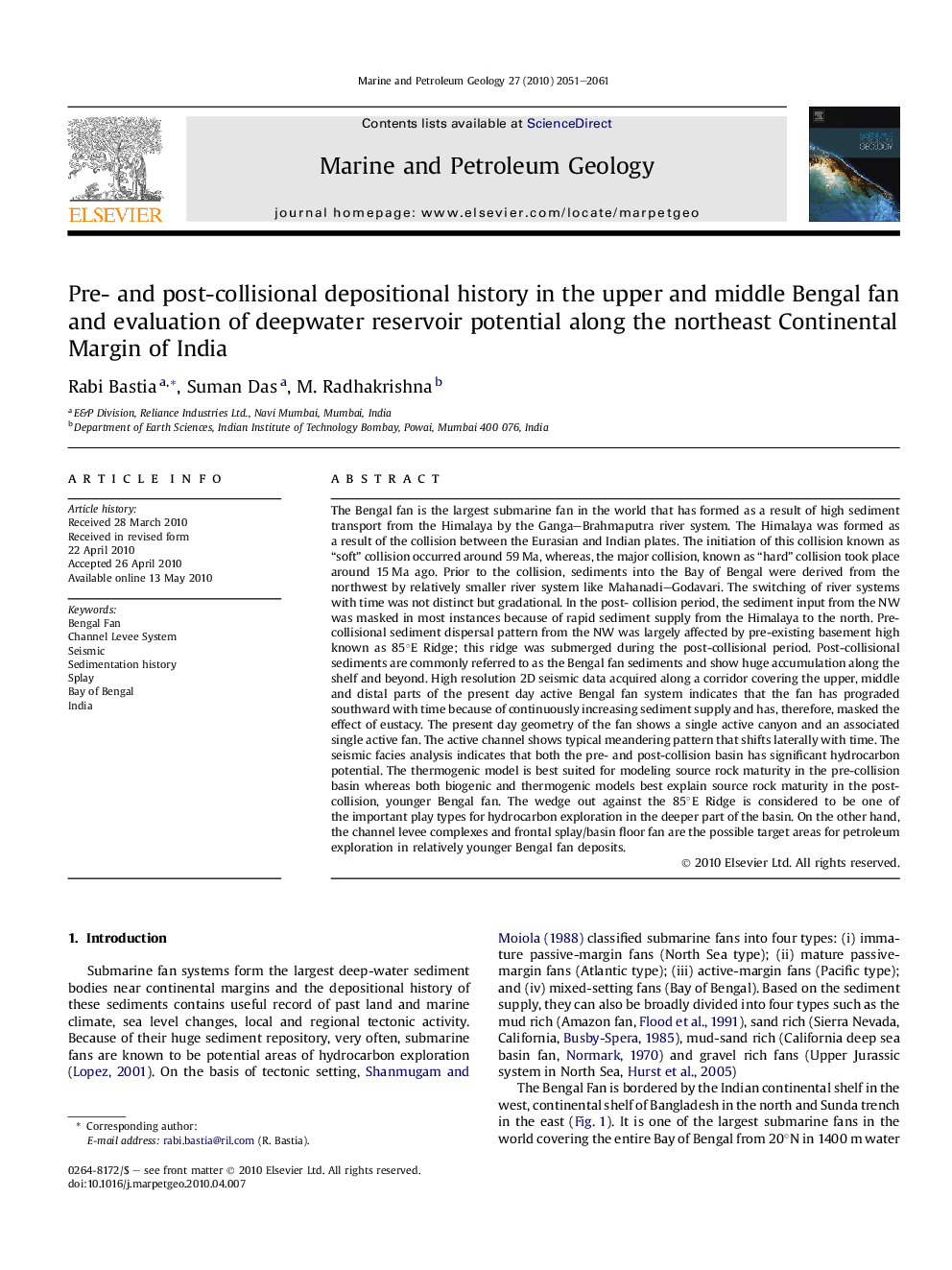| کد مقاله | کد نشریه | سال انتشار | مقاله انگلیسی | نسخه تمام متن |
|---|---|---|---|---|
| 4696197 | 1351661 | 2010 | 11 صفحه PDF | دانلود رایگان |

The Bengal fan is the largest submarine fan in the world that has formed as a result of high sediment transport from the Himalaya by the Ganga–Brahmaputra river system. The Himalaya was formed as a result of the collision between the Eurasian and Indian plates. The initiation of this collision known as “soft” collision occurred around 59 Ma, whereas, the major collision, known as “hard” collision took place around 15 Ma ago. Prior to the collision, sediments into the Bay of Bengal were derived from the northwest by relatively smaller river system like Mahanadi–Godavari. The switching of river systems with time was not distinct but gradational. In the post- collision period, the sediment input from the NW was masked in most instances because of rapid sediment supply from the Himalaya to the north. Pre-collisional sediment dispersal pattern from the NW was largely affected by pre-existing basement high known as 85°E Ridge; this ridge was submerged during the post-collisional period. Post-collisional sediments are commonly referred to as the Bengal fan sediments and show huge accumulation along the shelf and beyond. High resolution 2D seismic data acquired along a corridor covering the upper, middle and distal parts of the present day active Bengal fan system indicates that the fan has prograded southward with time because of continuously increasing sediment supply and has, therefore, masked the effect of eustacy. The present day geometry of the fan shows a single active canyon and an associated single active fan. The active channel shows typical meandering pattern that shifts laterally with time. The seismic facies analysis indicates that both the pre- and post-collision basin has significant hydrocarbon potential. The thermogenic model is best suited for modeling source rock maturity in the pre-collision basin whereas both biogenic and thermogenic models best explain source rock maturity in the post-collision, younger Bengal fan. The wedge out against the 85°E Ridge is considered to be one of the important play types for hydrocarbon exploration in the deeper part of the basin. On the other hand, the channel levee complexes and frontal splay/basin floor fan are the possible target areas for petroleum exploration in relatively younger Bengal fan deposits.
Journal: Marine and Petroleum Geology - Volume 27, Issue 9, October 2010, Pages 2051–2061